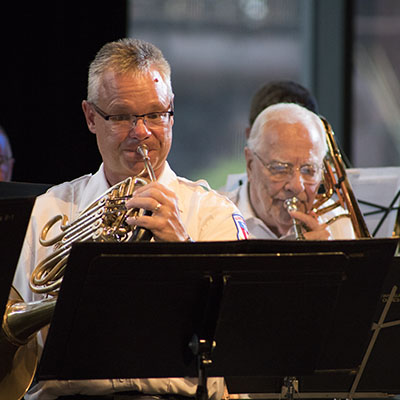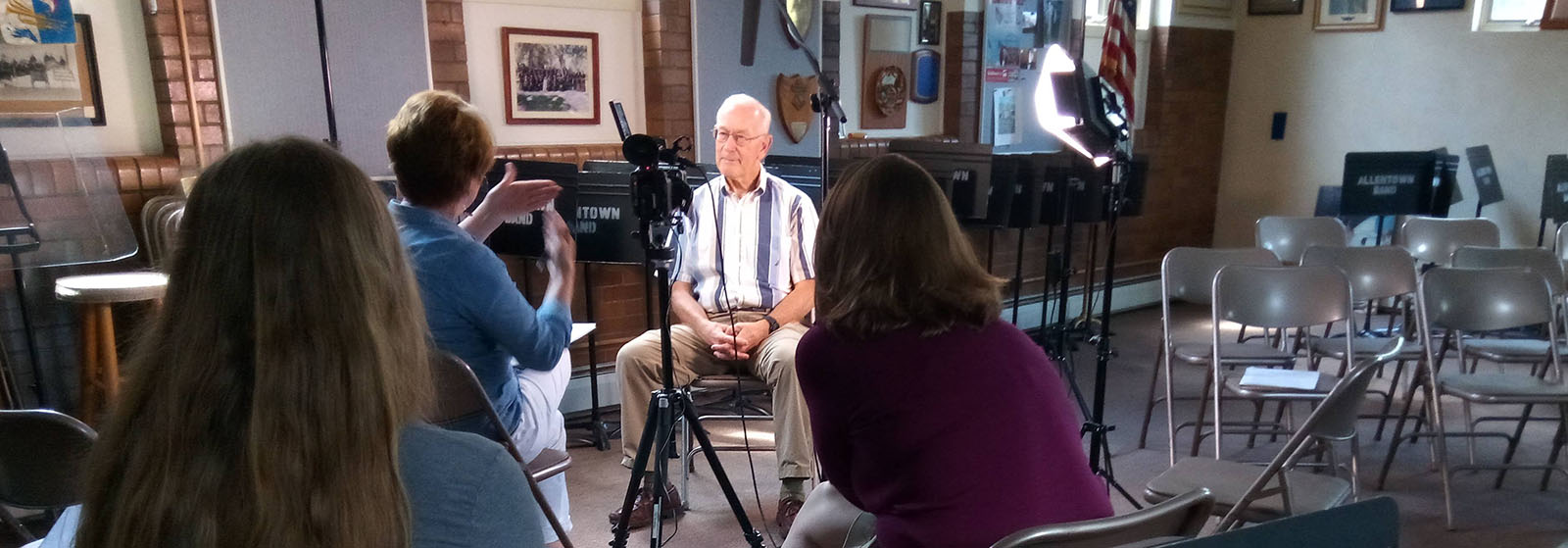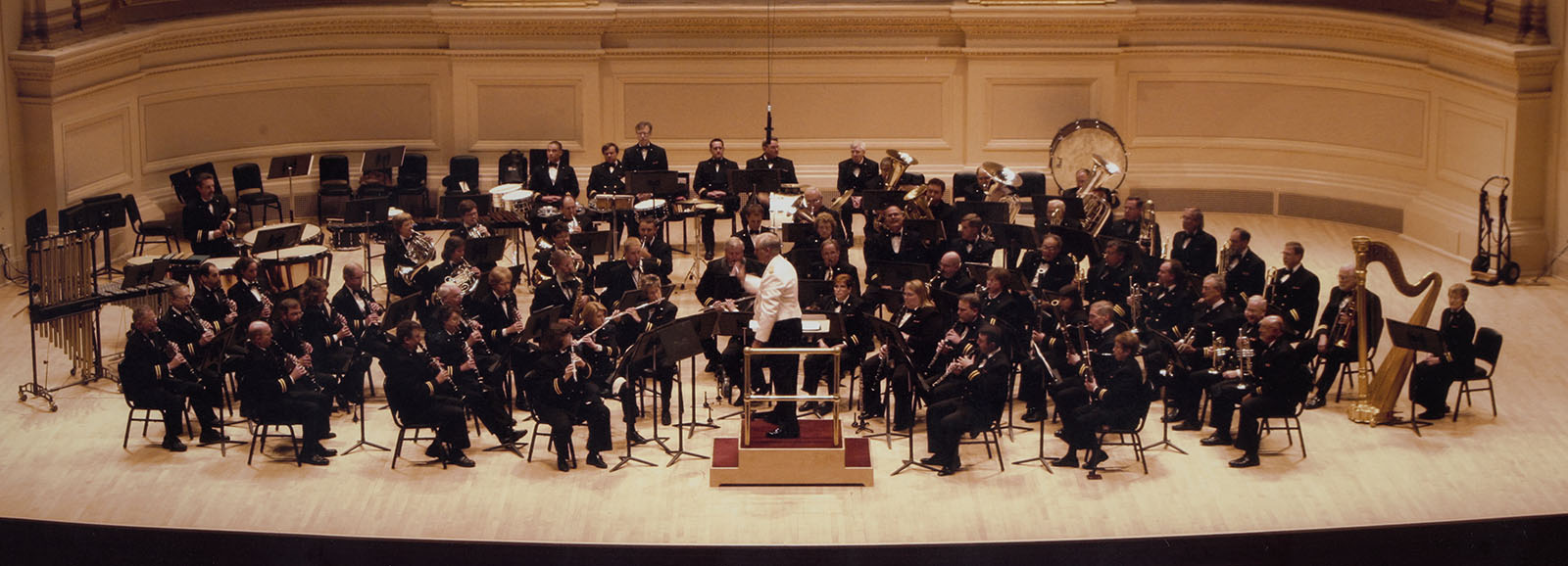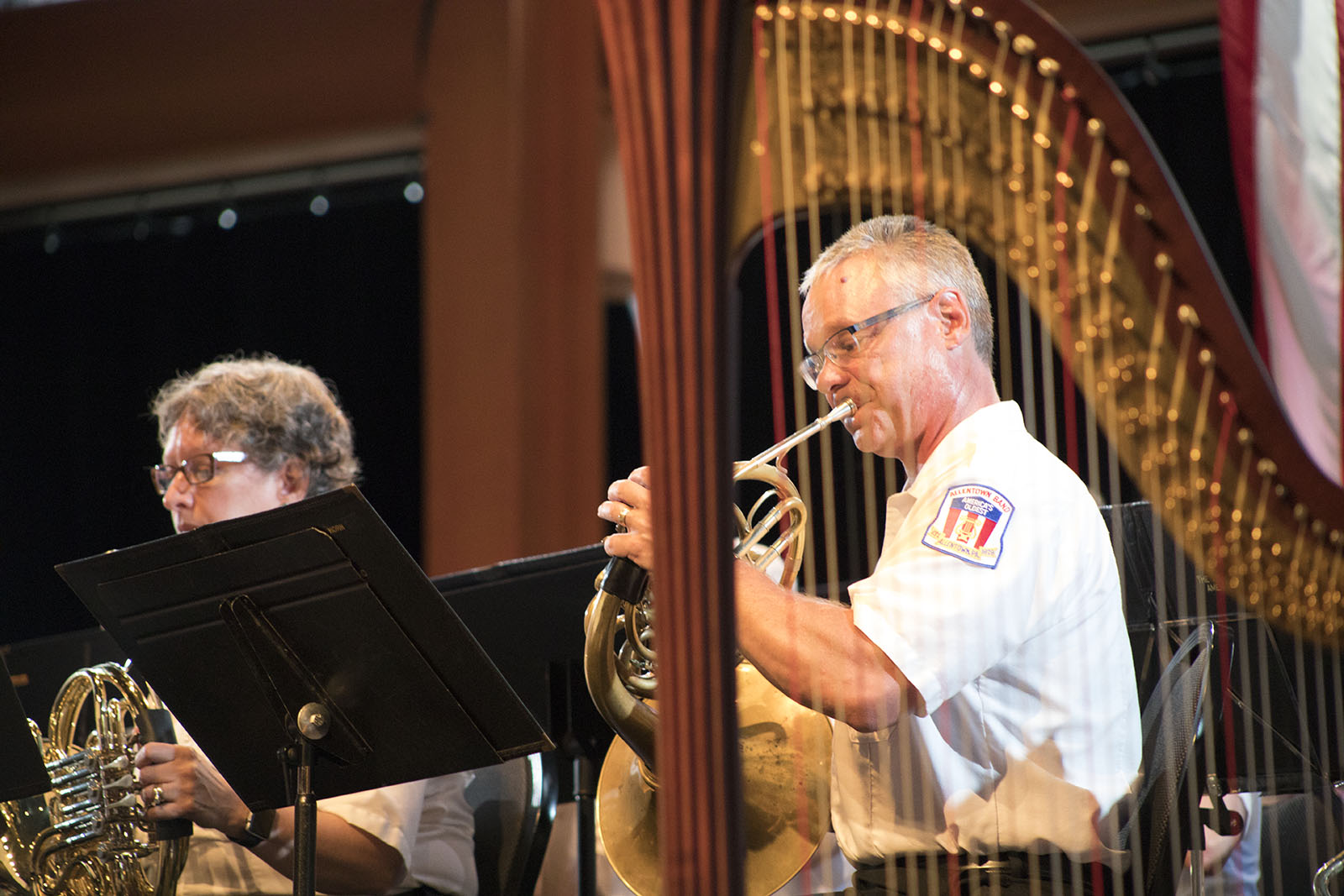More Than Music
The Allentown Band’s annual Commencement performance is just one part of its partnership with the College.

By Meghan Kita | May 15, 2019
On Sunday, graduates and their guests will enjoy the musical stylings of the Allentown Band, the oldest continuous community band in the country, which will be performing at its 48th consecutive Muhlenberg Commencement. The band’s history with the College goes back much further: It played at the inauguration of the College’s first President Frederick Augustus Muhlenberg in 1867. And the band’s own history goes back even further than that, with its first documented performance taking place on July 4, 1828.
A 191-year-old community partner like the Allentown Band, which is made up of volunteer musicians from the Lehigh Valley and surrounding areas, provides a wealth of material for students and faculty interested in storytelling and archival work. And, by using their time and expertise to help preserve and promote the band’s history, those same students and faculty can be assets to the band in return.
“We are thrilled to be collaborating with Muhlenberg College on the ongoing Allentown Band archival project,” says conductor Ronald Demkee. “It's been a privilege and real pleasure to work with the entire Muhlenberg team—staff and students alike.”
Creating a Course
The trio behind the Muhlenberg Memories Project—Special Collections and Archives Librarian Susan Falciani Maldonado, Assistant Professor of Media & Communication Kate Ranieri and Digital Cultures Technologist Tony Dalton—began collaborating with the Allentown Band last summer. They were laying the groundwork for two future projects: the digitization of the band’s framed items and other visual assets, which is ongoing, and a course called Documentary Fieldwork and Archival Science.
That class, which took place last fall, was funded by a $4,750 course development grant from Mellon's Lehigh Valley Engaged Humanities Consortium. In the class, students would create a digital platform to detail some of the band’s history and a finding aid, an archival tool that provides description and a “map” to the Allentown Band’s collection so future researchers can find what they need. Before the semester began, Falciani Maldonado, Ranieri and Dalton recorded video oral histories (pictured below) with five band members, including the oldest (Ezra Wenner, who’s 94).
“We interviewed the older people who were willing in the summer, and they became models for the students,” Ranieri says. “It also gave us the chance to become familiar with the band.”

Building a Story
In the fall, the four students in the class began collecting oral histories of their own, each with a different band member. They learned how to use open-ended prompts to get subjects “to tell stories as opposed to answering questions,” Dalton says, and also how to set up recording equipment in the field. Meanwhile, the students worked through old event programs, correspondence and scrapbooks to create the finding aid.
Once the students had the raw video footage and a sense for what was available in the archives, it was time to do something with it. Haley Hnatuk ’20, a film studies and media & communication double major, brought in an example of a digital story from The Washington Post that she thought turned out well. Dalton’s expertise allowed him to gauge what was technically doable in the weeks that remained, and using that knowledge, the students got to work.
“They really appreciated the times where we just got out of the way, or we said, ‘This is yours. Do what you will with it,’” Dalton says.
The final result was this website. Students cut together three videos, selected archival images and wrote text to create an interactive exhibit on the Allentown Band. Emily Robinson ’19 contributed the map of the band’s most significant performances, including some for President Abraham Lincoln, all the way up to 2007 (pictured below) and 2016 appearances at Carnegie Hall.
“It was a fantastic class,” Robinson says. “I learned more about digital storytelling through these different channels but also the archival side of doing this kind of research.”

Continuing the Work
Robinson, a media & communication major and political science minor who plays trombone in a few groups on campus, enjoyed the experience so much that she conducted a related independent study this spring. In it, she explored the stylistic influences on the Allentown Band to build an interactive timeline that’s now near the top of the website she helped create in Documentary Fieldwork and Archival Science.
The best-known individual to shape the band was John Philip Sousa, composer of “The Stars and Stripes Forever.” Starting in the late 1800s, about 20 members of the Allentown Band also played in Sousa’s band, bringing oral traditions back to Allentown. This “Sousa Sound” began to infuse the Allentown Band’s performances with precision and grace.
“The way that Sousa created his programs was by educating his audiences while still entertaining them,” Robinson says. That meant variety: A single show would incorporate Sousa marches, selections from operas and Broadway shows and band arrangements of large orchestral pieces. In most of their performances, the Allentown Band continues this tradition today.
While Robinson conducted her independent study, Dalton started digitizing VHS and cassette tapes of old Allentown Band performances. Also, a $6,000 grant from the Council of Independent Colleges funded the digitization of visual assets from the Allentown Band’s headquarters. Starting this fall, members of the band fraternity Kappa Kappa Psi will be able to earn service hours from entering metadata (size, date, description) on those digital files.
Moving forward, Ranieri says an interesting topic to explore further could be the Allentown Band’s youth outreach programming, which may provide a unique intersection among band members, young local musicians and Muhlenberg students while continuing to increase the visibility of the band. She, together with Dalton and Falciani Maldonado, are planning to continue gathering oral histories from band members this summer.
“There are so many different places to take this,” Dalton says. —Meghan Kita

